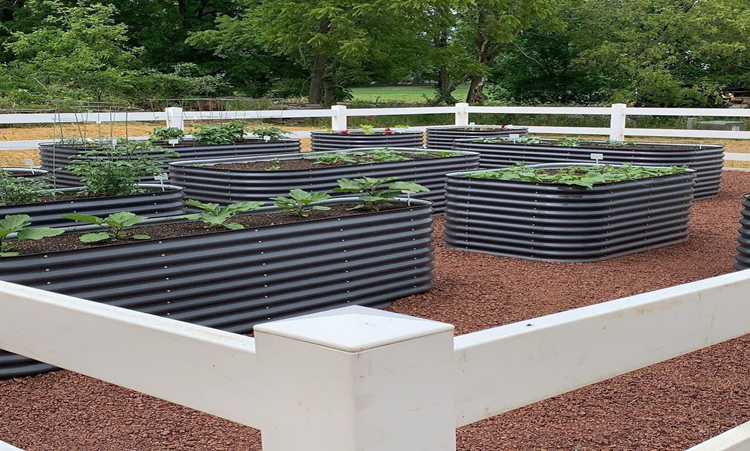Raised bed gardening refers to yards whose surface areas are greater than the surrounding ground, whether on the lawn, patio, or deck.
Many are created by constructing large boxes to hold the garden soil roughly 8 inches more than the bordering ground. Still, it is likewise feasible and occasionally rather useful to mound up the dirt into rows of raised planters box with no extra support.
Some ornamental raised beds maybe two or 3 feet high, depending on their landscape positioning. And, some are made as free-standing boxes that are perfect for decks and patios, along with folks that can not or do not want to bend over or stoop to tend to their yards.
The only drawback to raised bed gardening is a small upfront financial investment of time and cash; yet, the investment will swiftly pay substantial rewards.
How to Create:
1. Select a relatively level location, when possible, and one that will certainly get at the very least 8 hours of sunshine daily.
2. Eliminate any existing lawn, as this will substantially lower the quantity of weeding you’ll require to do later.
3. Till the soil where you’ll be including your bed. Include sand if your soil is hefty clay and include compost, regardless of the soil. This will allow you to have good water drainage and an efficient foundation for deeper origins.
4. Construct the walls of your bed with unattended lumber (cedar is suitable, composite lumber is additionally all right), or utilize bricks, concrete or decorative blocks for a much more decorative bed. Elevated beds should preferably be about 8 inches higher than the surrounding ground. If you’re using 2 x 8 lumber on edge, protect the lumber with 2 x 4 support risks. Drive the supports at least 18″ into the ground to stop the wall surfaces of your bed from falling.
5. Free-standing beds – obtainable from both sides – need to be about 4 feet wide. If a fence or structure borders your bed, make it 3 feet vast to make sure that you can reach into it without walking on the garden’s surface.
6. If you are constructing multiple beds, leave sufficient space in between them to make sure that you can conveniently cut the turf or create paths with shredded compost. (Don’t make use of shredded compost for the veggie garden, though, as it depletes the soil’s nitrogen.).
7. Fill up the bed with raised beds soil, which can be either bought or created. The best dirt for many vegetable gardening is loamy dirt that drains rather well – that excellent medium between clay and sand. You can enhance your soil by including garden compost and tilling your dirt every year.
8. Plant intensively; give the plants enough room to grow, but you don’t require to allow space for strolling. Certainly, among the main advantages of raised bed gardening is that you don’t need to stroll on the beds.
9. At the end of the horticulture season, include compost in the soil and till it. Cover the dirt with a layer of compost – our favorite is a layer of shredded fallen leaves and yard trimmings, which can quickly be tilled right into the soil at the start of the following period.
With a little planning and work upfront, you’ll delight in years of effective gardening with elevated beds.







